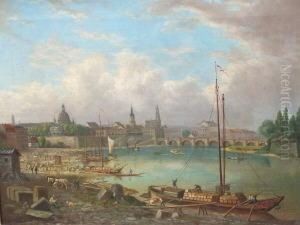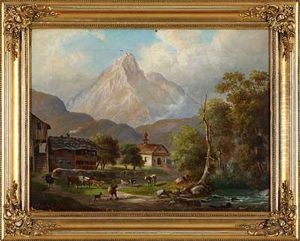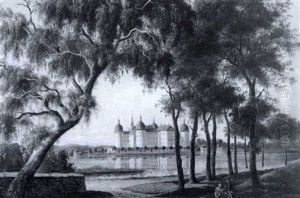Ernst August Leuteritz Paintings
Ernst August Leuteritz was a notable German sculptor and modeller, born in 1818 in Röhrsdorf, Saxony. He is particularly renowned for his work with the famous Meissen porcelain manufacturing company. Although not as widely known as some of his contemporaries, Leuteritz's contributions to the field of porcelain art were significant during the 19th century, a period when European porcelain was highly esteemed and collected by the elite.
Leuteritz received his artistic training at the Dresden Academy of Fine Arts, where he honed his skills in sculpture under the tutelage of renowned artists of the time. His talent and craftsmanship led him to join the Meissen porcelain company in 1834, where he initially worked as a modeler. Over the years, Leuteritz climbed the ranks within the company due to his remarkable skill and innovative designs.
In 1855, he took over as the head modeller at Meissen, a position he held until his retirement in 1886. During his tenure, Leuteritz was responsible for introducing new shapes and patterns to the Meissen repertoire. He revitalized the company's offerings with a range of styles, from Rococo revivals to Renaissance-inspired pieces. One of his most significant contributions was the introduction of a technique known as 'pâte-sur-pâte', a method of porcelain decoration in which layers of slip are applied to create relief designs.
Leuteritz's work reflected the eclectic tastes of the Victorian era, and he was adept at creating both historical revivals and pieces that appealed to contemporary sensibilities. His designs often featured elaborate figures, intricate floral patterns, and a keen attention to detail that became synonymous with Meissen's high-quality products.
Despite his success, Ernst August Leuteritz's legacy is somewhat overshadowed by the broader history of the Meissen porcelain factory, which dates back to its founding in 1710 and its association with figures like Johann Joachim Kändler, another key modeller from an earlier period. Nonetheless, Leuteritz's contributions were instrumental in ensuring the company's continued prestige and success in the face of changing artistic tastes and the industrial challenges of the 19th century.
Ernst August Leuteritz passed away in 1893, leaving behind a legacy of craftsmanship and innovation in porcelain art. His work remains collected and admired by porcelain enthusiasts around the world, and his pieces are often showcased in museums and galleries that specialize in decorative arts.



